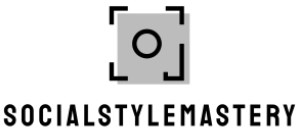In the ever-evolving world of technology, one feature that has significantly enhanced the usability of touchscreen devices is palm rejection. Whether you are a digital artist, student, or professional, understanding palm rejection can help you make the most out of your touchscreen device. But what exactly is palm rejection, and how does it work?
Understanding Palm Rejection
Palm rejection is a technology found in touchscreens that allows the device to distinguish between a user’s intentional touch or gesture and an unintentional touch, such as the palm of their hand resting on the screen. This feature is particularly beneficial for stylus or pen users, such as in digital art or note-taking applications.
How Palm Rejection Works
Palm rejection leverages advanced algorithms and hardware sensors to analyze the touch points on the screen. When a user rests their palm on the touchscreen while writing or drawing with a stylus, the device’s software recognizes the larger contact area and differentiates it from the finer tip of a stylus.
Here is a basic breakdown of how palm rejection works:
- Detection: The touchscreen detects multiple touch points on the screen.
- Analysis: The software analyzes the touch points to distinguish between the palm and the stylus. It considers factors such as touch pressure, contact area, and motion patterns.
- Rejection: The device ignores the touch points matching the characteristics of a palm, ensuring that only the intended stylus input is registered.
Applications of Palm Rejection
Palm rejection technology is widely used in various fields and devices:
- Digital Art: Artists can sketch, draw, and paint without worrying about their palm interfering with their work.
- Note-taking: Students and professionals can handwrite notes on tablets, mimicking the natural experience of writing on paper.
- Design and Engineering: Professionals in these fields can draft detailed plans and designs accurately.
Benefits of Palm Rejection
Incorporating palm rejection in touchscreens offers numerous advantages:
- Enhanced Productivity: Users can perform tasks more efficiently without correcting unintended marks or gestures.
- Improved Accuracy: The technology ensures that only the precise inputs from the stylus are recorded, enhancing the accuracy of the work.
- Natural User Experience: Mimics the traditional paper-and-pen experience, making it more intuitive for users.
Devices with Palm Rejection
Modern-day devices that often come equipped with palm rejection include:
| Device Type | Examples |
|---|---|
| Tablets | iPad Pro, Microsoft Surface |
| 2-in-1 Laptops | Surface Book, Lenovo Yoga |
| Stylus Pens | Apple Pencil, Surface Pen |
Challenges and Limitations
Despite its advantages, palm rejection technology isn’t without its challenges:
- Environmental Factors: Extremely cold or hot conditions can affect touchscreen sensitivity.
- Hardware Limitations: Not all devices have the hardware to support effective palm rejection.
- Software Updates: Occasional software glitches can impact the functionality and may require updates or calibration.
Future of Palm Rejection Technology
As technology advances, palm rejection is set to become more sophisticated. Future improvements might include:
- AI Integration: Using artificial intelligence to further refine the touch discrimination process.
- Broader Device Compatibility: Expanding effective palm rejection capabilities to lower-end devices.
- Improved Sensitivity: Enhanced detection of different hand positions and motions for even more accurate results.
Conclusion
Palm rejection technology has revolutionized how we interact with touchscreen devices, providing a seamless and efficient user experience. As this technology continues to evolve, it promises to open up even more possibilities for digital interaction across various fields, making it an indispensable feature for many users.
